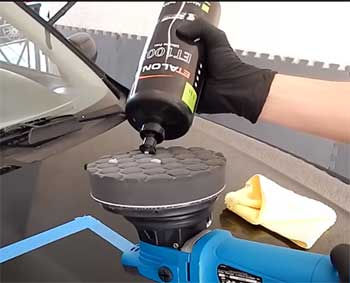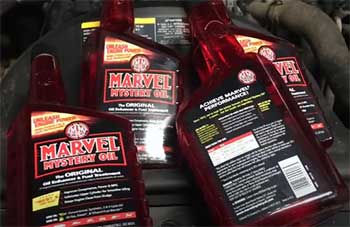While there are tons of options to give your car that radiant, long-lasting look you’ve been yearning for, not all popular claims hold true. The goal is to get a killer coating to keep your ride looking lovely.
So, let’s see how ceramic compares to Auto Butler. The latter is made of natural and synthetic conditioners. Meanwhile, ceramic is made of silicon dioxide. Ceramic coating lasts three to four years, while Auto Butler lasts six months.
I’ll try to keep it short and sweet. Thus, without wasting any second, let’s dive deeper into it!
A Quick Distinguishing Table
| Attributes | Auto butler | Ceramic |
| Components Used | Natural and synthetic conditioners | Silicon dioxide |
| Durability | Six months | Three to four years |
| Technology Implemented | Fabrigard stain repellent | Thermal heat |
| Warranty Term | Five years | Three years |
| Application Process | Complex | Easy |
| Cost | Approx. $599-$695 | Approx. $600-$1000 |
Key Differences Between Auto Butler And Ceramic Coating

- Components Used
There’s nothing quite like the touch and feel of a refined leather interior of your vehicle. And it gets even better!
Natural replenishing products make it much easier for the machine to maintain its original look. Auto Butler comprises natural and synthetic fibers to help keep the shiny appearance for years.
By contrast, ceramic is typically silicon dioxide obtained from quartz and sand. Due to its excellent chemical bonding and intrinsic factors, the coating rarely breaks down under extreme weather conditions like rain and excess sunlight.
Have you ever wondered why ceramic is named the best form of protection? It’s because it goes to extra levels to ensure that UV rays have nothing on your car by preventing fading and oxidizing of the paint.
Also Read: Differences Between JetSeal And Ceramic Coating.
- Durability
Can you imagine spending a lot of time applying a sealant only for it to last a week?
And then, oops, the dirt, grime, and whatnot are back again. That’s why you need a one-time magical potion that you can apply and forget about for years.
Auto Butler is tough enough to withstand all the elements for six months. After that, you need to reapply for guaranteed paint protection.
Contrarily, ceramic lasts three to four years. With this product, you can rest easy knowing that your vehicle is in good hands and there’s nothing to worry about.
Of course, you frequently have to do some cleaning to get the most out of this coating. But ceramic takes the lead if you are looking at a longer lifespan.
- Technology Implemented

Is your car your second home?
I spend much of my day-to-day life in my machine, so I relate.
Auto Butler is a heaven-sent product, which ensures the interior part is in good condition and easy to clean using the Fabrigard technology.
And we can agree that cleaning can be a chore with the occasional spills.
This innovative Fabrigard stain-repellent technology uses high pressure to push the stain blockers further underneath the seats and mats.
Oppositely, ceramic features thermal heat technology that uses high temperatures to apply the coating to your vehicle, ensuring it’s perfectly attached.
- Warranty Term
Warranty is a sensitive and necessary factor you must keep an eye on whenever you spend money on a product. Look at it this way; what if the item doesn’t live up to its claim?
Auto Butler takes liability for bird droppings, oxidation, fading, and environmental damage for five years.
In opposition, ceramic coating is backed by three-year warranty coverage upon the date of purchase that covers impact from weather, staining, and paint oxidation.
- Application Process

Thanks to Auto Butler’s two reapplications, you can be assured of paint protection for the rest of the year.
However, the application process is complex and requires time to get it right.
The first step is applying a synthetic sealant to eliminate minor contaminants.
Once done, place a high-grade polymer finish on the synthetic layer.
Inversely, the ceramic application is a complete breeze!
It takes about an hour to apply and only 12 hours to dry.
- Cost
Auto Butler is on the lower end of the price tag between the two options. For your car to taste this coating, you need around $599 to $695.
On the other hand, ceramic costs between $600 and $1000. The question is, is it worth the few extra bucks? My view? Absolutely!
Which Coating Should You Pick?
I understand why you’d still be unsure whether to swing for Auto Butler or ceramic since they are both excellent products. But what features carry more weight to you?
Auto Butler is less pricey and has superior five-year coverage. On the flip side, ceramic lasts longer, is incredibly easy to apply, and provides optimal protection to your vehicle. Hopefully, I’ve helped make your choice easier.
Also Read: Differences Between Ceramic Coating And Liquid Glass Polish.
Frequently Asked Questions (FAQ)
No matter how good, any product has a weakness, and ceramic is no different. A significant drawback to expect from this coating is its complex installation process. With this item, you need a professional to do the work.
Well, it depends on what you’re most intrigued about. Ceramic coating lasts three to four years, significantly longer than paint sealant. But paint sealant is well known for its ease during application.
Ceramic always pops into mind anytime I think of the best car coating, mainly due to its excellent protection against weather elements, scratches, dust, spills, or other destructive components.
Hyundai auto butler is a paint shielding technique that assures you of a gorgeous car finish with years of warranty.
Wrapping Up
As a car fanatic, no matter where you reside, the key to retaining the dazzling look is paint protection. There’s no other effective way. Which product is your first pick in the Auto Butler and ceramic coating battle?
If you are short on finances and are immensely fascinated by a more extended warranty period, look no further than Auto Butler.
However, opt for ceramic if you are okay with spending extra hundreds in return for increased lifespan, a quick and beginner-friendly application process, and maximum protection.

